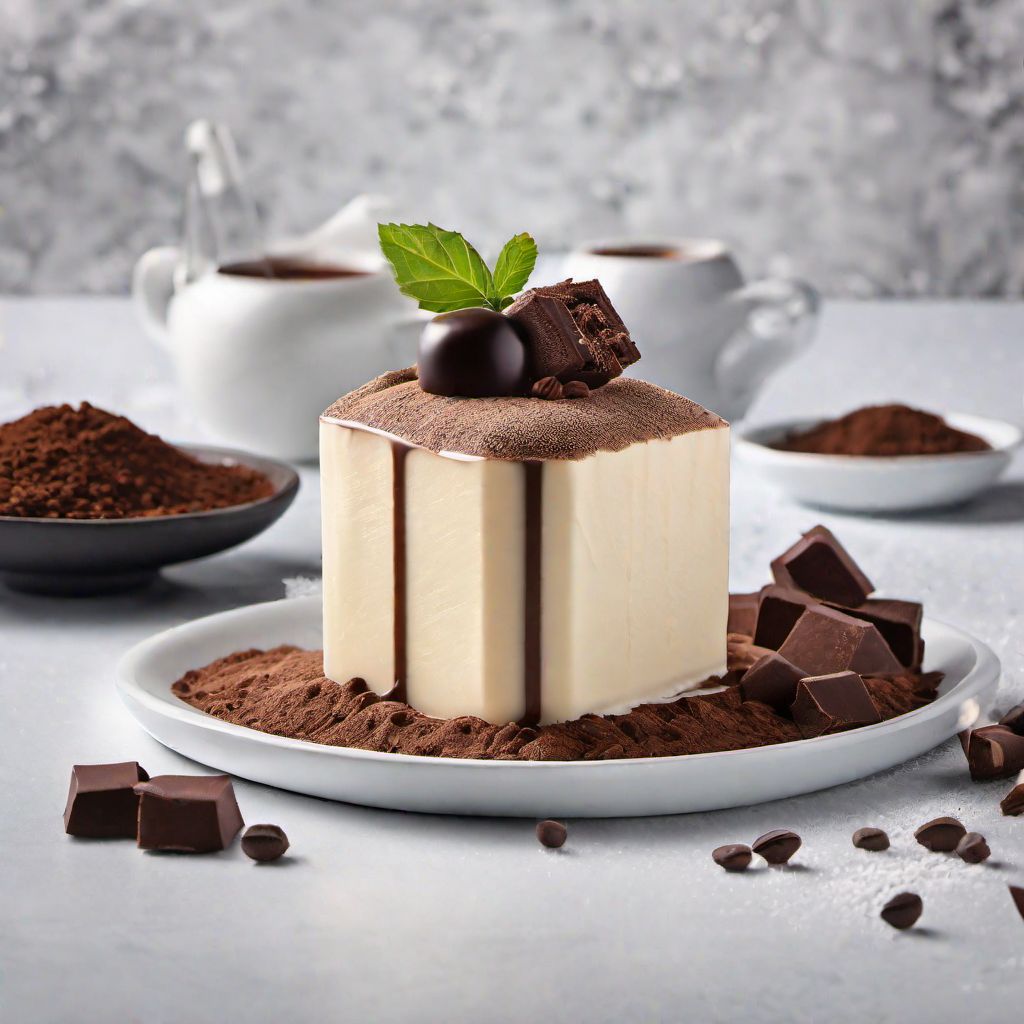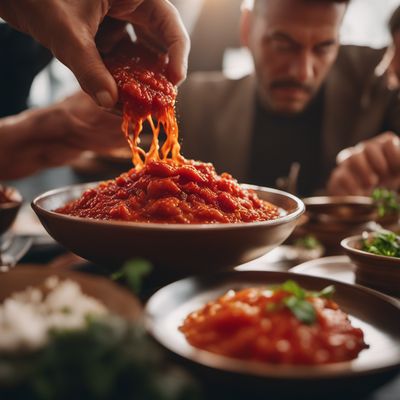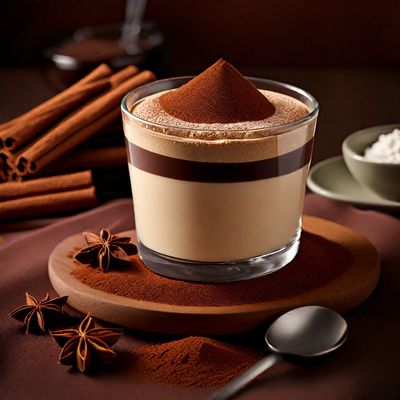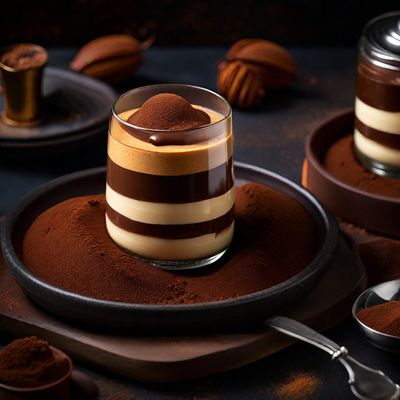
Recipe
Molecular Gastronomy Tiramisù
The Molecular Twist: Tiramisù Reinvented
4.9 out of 5
In the realm of molecular gastronomy, we take the classic Italian dessert, Tiramisù, and transform it into a visually stunning and innovative creation. By incorporating modern techniques and ingredients, we elevate this beloved dessert to new heights, while still maintaining its traditional flavors and textures.
Metadata
Preparation time
30 minutes
Cooking time
10 minutes
Total time
3 hours 40 minutes
Yields
4 servings
Preparation difficulty
Medium
Suitable for
Vegetarian, Gluten-free (if using gluten-free ladyfingers), Nut-free, Egg-free, Low sugar
Allergens
Milk, Gluten (if using regular ladyfingers), Chocolate (if allergic)
Not suitable for
Vegan, Dairy-free, Paleo, Keto, High sugar
Ingredients
In this molecular gastronomy adaptation of Tiramisù, we focus on deconstructing and reconstructing the elements of the dish. We use techniques such as spherification, foams, and gels to create unique presentations and textures. The flavors of coffee, mascarpone, and ladyfingers remain at the core, but are presented in unexpected and exciting ways. We alse have the original recipe for Tiramisù, so you can check it out.
-
200g (7 oz) mascarpone cheese 200g (7 oz) mascarpone cheese
-
100g (3.5 oz) sugar 100g (3.5 oz) sugar
-
4g (0.14 oz) gelatin sheets 4g (0.14 oz) gelatin sheets
-
200ml (6.8 fl oz) heavy cream 200ml (6.8 fl oz) heavy cream
-
100ml (3.4 fl oz) espresso coffee 100ml (3.4 fl oz) espresso coffee
-
50ml (1.7 fl oz) coffee liqueur 50ml (1.7 fl oz) coffee liqueur
-
10g (0.35 oz) cocoa powder 10g (0.35 oz) cocoa powder
-
4g (0.14 oz) agar-agar 4g (0.14 oz) agar-agar
-
100ml (3.4 fl oz) milk 100ml (3.4 fl oz) milk
-
50g (1.7 oz) ladyfingers 50g (1.7 oz) ladyfingers
-
50g (1.7 oz) dark chocolate 50g (1.7 oz) dark chocolate
Nutrition
- Calories: 350 kcal / 1465 KJ
- Fat: 25g (15g saturated)
- Carbohydrates: 25g (15g sugars)
- Protein: 5g
- Fiber: 1g
- Salt: 0.2g
Preparation
-
1.In a bowl, combine mascarpone cheese and sugar. Mix until smooth.
-
2.Bloom the gelatin sheets in cold water for 5 minutes, then squeeze out excess water. Dissolve the gelatin in a small amount of warm water.
-
3.Whip the heavy cream until soft peaks form. Gently fold the whipped cream into the mascarpone mixture.
-
4.In a separate bowl, combine espresso coffee and coffee liqueur. Dip the ladyfingers into the coffee mixture and arrange them in a single layer in serving glasses.
-
5.Pour the mascarpone mixture over the ladyfingers, filling the glasses halfway.
-
6.Chill the glasses in the refrigerator for 2 hours to set.
-
7.Meanwhile, prepare the coffee gel by dissolving agar-agar in milk. Bring the mixture to a boil, then remove from heat and let it cool.
-
8.Once the coffee gel has cooled and thickened, pour it over the set mascarpone layer in the glasses.
-
9.Return the glasses to the refrigerator and let them set for another hour.
-
10.Before serving, grate dark chocolate over the top of each glass and dust with cocoa powder.
Treat your ingredients with care...
- Gelatin sheets — Make sure to bloom the gelatin in cold water before dissolving it. Squeeze out excess water before adding it to the recipe.
- Agar-agar — Dissolve agar-agar in a small amount of liquid before adding it to the recipe. It needs to be heated and cooled to set properly.
- Ladyfingers — Dip the ladyfingers quickly into the coffee mixture to avoid them becoming too soggy.
Tips & Tricks
- Experiment with different shapes and presentations using molds or pipettes to create unique textures and designs.
- For a more intense coffee flavor, add a few drops of coffee extract to the mascarpone mixture.
- If you prefer a stronger alcoholic kick, increase the amount of coffee liqueur in the recipe.
- Garnish with edible flowers or gold leaf for an extra touch of elegance.
- Serve the Molecular Gastronomy Tiramisù chilled for the best texture and flavor.
Serving advice
Serve the Molecular Gastronomy Tiramisù in individual glasses or on small plates to showcase the layered presentation. Accompany each serving with a small spoon or fork for easy enjoyment.
Presentation advice
To enhance the visual appeal, drizzle a coffee reduction or chocolate sauce on the plate before placing the glass. Garnish with a dusting of cocoa powder and a sprig of fresh mint.
More recipes...
More Italian cuisine dishes » Browse all

Südtiroler Gerstensuppe
Barley soup
Südtiroler Gerstensuppe is a traditional barley soup from the South Tyrol region of Italy.

Ciriola
Ciriola is a traditional Italian bread that is known for its soft and fluffy texture. It is a versatile bread that can be enjoyed on its own or...

Sugo all'arrabbiata
Angry sauce
Sugo all'arrabbiata is a spicy tomato sauce that originated in Italy. It is a popular sauce for pasta dishes.









